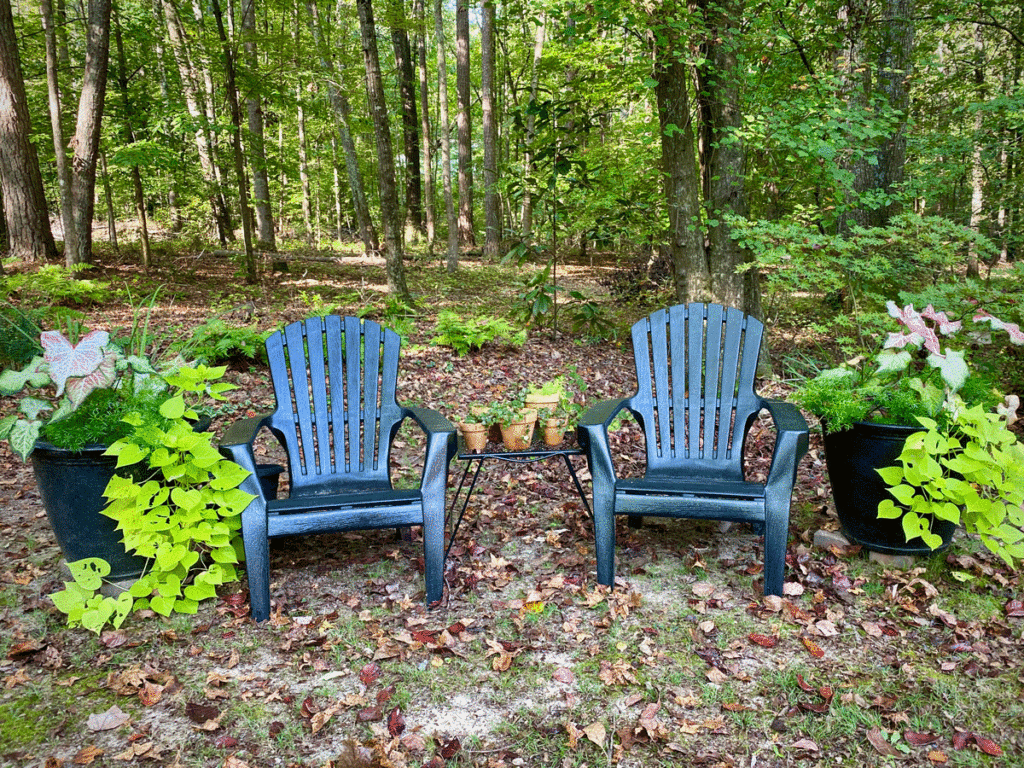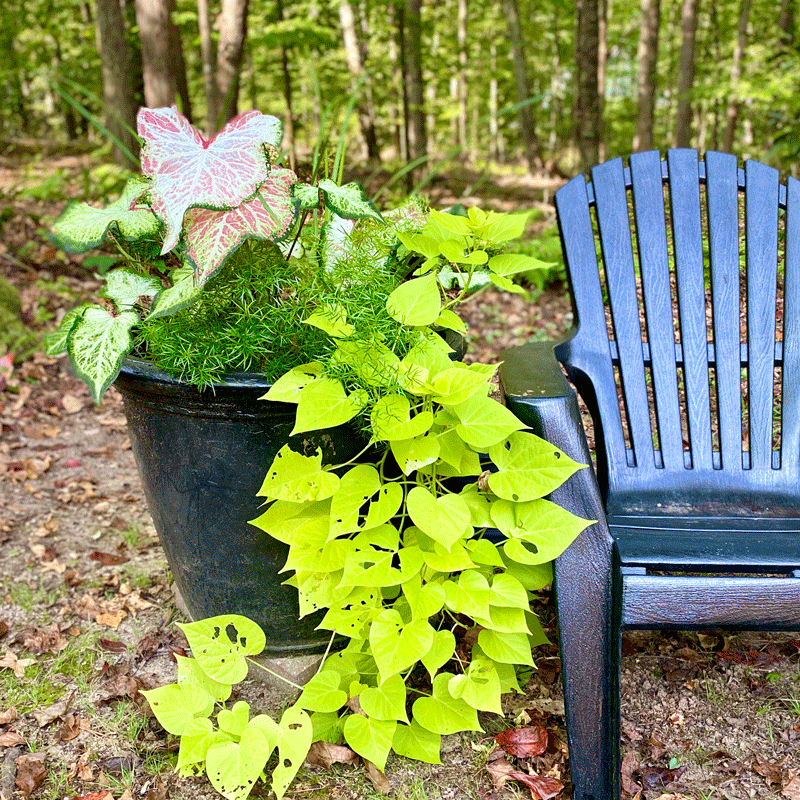It’s early October in my zone 7b, Atlanta-area garden and as I walk about the property in this exquisite (if lamentably too dry) weather, I note what went well this year. Like the church youth group icebreaker of “highs” and “lows.”
A high for this summer is the container pictured here. It was a grody gray container that I spray painted black and filled with beautiful plants, many from Proven Winners. The caladiums, cordyline, asparagus fern and sweet potato vine thrilled, filled and spilled all summer.
Read Summer Flower Pots
I admit it’s not a super-lush arrangement even here at the end of the season. But it’s worked out well because we were not at home for six weeks in the hottest days of summer. That was six weeks when these planters didn’t get a drop of water outside of rainfall. And they held up. In fact, I perhaps watered these containers 6 or 8 times all summer long. The planters are not on drip and they’re not self-watering. I think the site had a lot to do with it. They get mid-day sun and not the brutal late afternoon light that sizzles summer plants.
What Happens Next to my Summer Flower Pots?
What happens next for these plants? We’re six weeks away from the average date of first frost in our area (November 14, although it has come earlier). I don’t have a greenhouse or a protected indoors area that I can overwinter plants. However, I have friends in zone 9 Florida who I will visit in a few weeks and they assure me they will happily accept plants!
I plan to keep the caladiums for myself. I plan to pull up the plants, trim back the stalks and set the tubers in a sheltered place outdoors to dry. Once they’re dry, I will store them in a paper bag and then place them in a corner of the basement. I’ve had success with this method in the past. Say the gardener’s overwintering prayer for me.
The sweet potato vine will stay behind, too. I’ve had good luck keeping it in pots or burying the tubers in the ground. It will usually survive the worst of winter and come back the next year. I plant to hedge my bets by taking cuttings and keeping them going in water by my kitchen sink all winter. In spring, after all danger of frost has passed, I can plant the rooted cuttings in pots with other flowers.

Read More Gardening Stories on A Cook and Her Books
My gardening year begins when my Soil3 arrives. This cubic yard of humus compost is the best start for plants.
You can grow a victory garden in your backyard. Learn how to start a victory garden.
Join the Conversation
Let’s talk about gardening and more on Instagram and Facebook. I’d love to hear from you!



Leave a Comment